#henri met de bles
Explore tagged Tumblr posts
Text
Nightmare Fuel Art Master-post, Vol. I
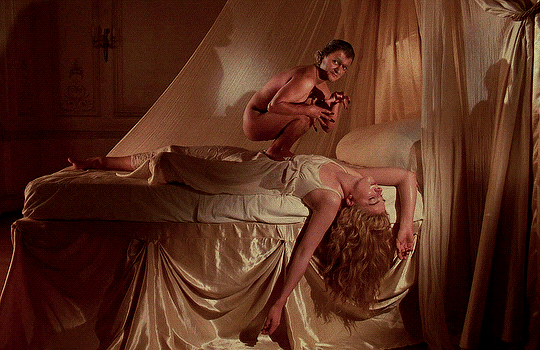
Regularly updated!
15th Century
Gerard David Hans Holbein Hans Memling Hieronymous Bosch Lucas Cranach the Elder Matthias Grunewald Titian
16th Century
Adriaen van de Venne Artemisia Gentileschi Filippo Napoletano Hans Baldung Grien Herri Met de Bles Jacopo Ligozzi Jan Mandijn Jan Massys Pieter Bruegel the Elder
17th Century
Caravaggio Francesco Furini Frans Francken II Juan de Valdes Leal Jusepe de Ribera Leonaert Bramer Peter Paul Rubens Salvator Rosa 18th Century
Edvard Munch Francisco de Goya Henry Fuseli J.M.W. Turner Karl Alexander Wilke Katsushika Hokusai Paolo Vincenzo Bonomini William Blake
19th Century
Amedee-Ernest Lynen Antoine Wiertz Armand Rassenfosse Arnold Bocklin Carlos Schwabe Edmond Louis Dupain Felicien Rops Francesco Scaramuzza Franz von Stuck Georges Rochegrosse George Frederic Watts Gustave Dore Gustave Moreau Henri Regnault Ilya Repin Jakub Schikaneder James Tissot Jean Francois Millet Jean Leon Gerome Jean Paul Laurens Jean Veber Jeno Gyarfas Jose Casado del Alisal Laszlo Mednyanszky Louis Gallait Maximilian Pirner Odilon Redon Paul Burck Theodore Gericault Theodor Kittelsen Theophile Schuler Tsukioka Yoshitoshi Wilhelm Kotarbinski William Holbrook Beard Witold Wojtkiewicz
“Turn of the Century” Alberto Martini Alfred Kubin Antonio Rizzi Egon Schiele Frantisek Kupka Fritz Gareis Georges Desvallieres Harry Clarke Heinrich Kley Henryk Weyssenhoff James Ensor Jaroslav Panuska Jean Delville Josef Mandl Julien Adolphe-Duvocelle Kathe Kollwitz Manuel Orazi Marian Wawrzeniecki Oscar Parviainen Piotr Stachiewicz Richard Tennant Cooper Sascha Schneider Sergius Hruby Wladyslaw Podkowinski Vasily Vereshchagin
39 notes
·
View notes
Photo
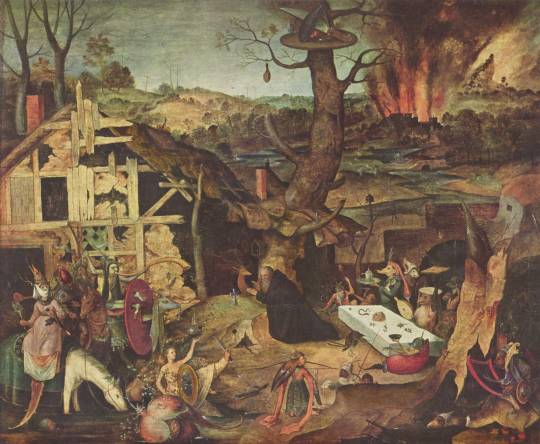
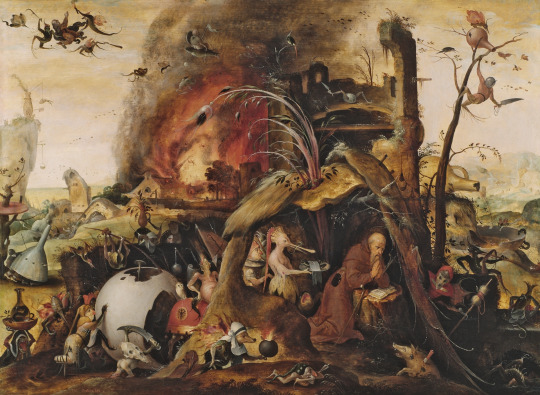
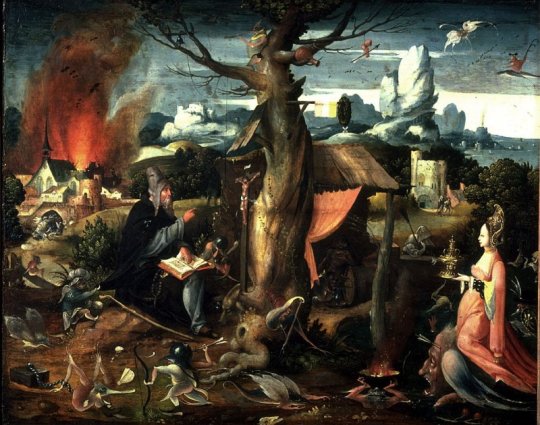
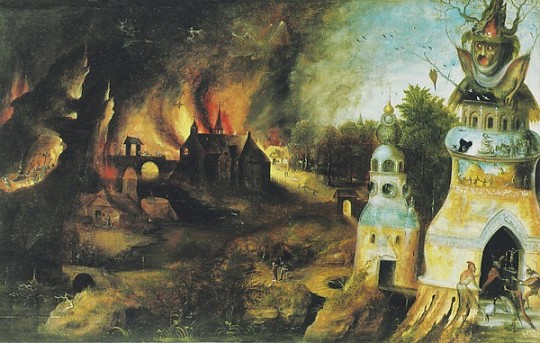

Temptation of Saint Antony by,
Pieter Huys
Jan Mandyn
Jan Wellens de Cock
Henri met de Bles
Henri met de Bles
#Antwerp Mannerism#northern mannerism#henri met de bles#pieter huys#jan mandyn#jan wellens de cock#16th century#temptation of saint antony#Hieronymus Bosch#boschesque#follower of bosch
17 notes
·
View notes
Photo

Lambert van Noort & Henri Bles - Saint Jérôme pénitent -
Musée provincial des Arts anciens du Namurois, Namur.
Lambert van Noort (1520–1571) was a Flemish Renaissance painter.
Herri met de Bles (also known as Henri Blès, Herri de Dinant, Herry de Patinir, and Civetta) (c. 1510 – c. 1555–1560) was a Flemish Northern Renaissance and Mannerist landscape painter, native of Bouvignes or Dinant (present-day Belgium).
37 notes
·
View notes
Photo

Henri Bles ( Herri Met De Bles ), Montée au Calvaire, Kunstmuseum, Saint Gall
12 notes
·
View notes
Photo

Henry Met de Bles, Sodom and Gomorrah
19 notes
·
View notes
Video
vimeo
Playing with Henri met de Bles (version un peu plus longue) from André Fromont on Vimeo.
0 notes
Photo

REVIEW
It’s Getting Scot in Here by Suzanne Enoch
Wild Wicked Highlanders #1
Hmmm….engaging, easy to read, fun historical romance that seems more a fairy tale than a truly believable story BUT when reading romance one is really trying to escape and this book did take me away to another country and earlier time period. I experienced stinky London, went to balls and saw the gorgeous costumes, rode in carriages, danced, was thankful that expectations then were not what they are now and got to watch the two main characters fall in love. So, it was a fun day spent reading and I enjoyed it.
What I liked about the book:
* The brothers – they were there for one another
* The romance between Niall and Amelia-Rose
* The slow build but steam when it came within the romance (even though...really?)
* The addition of Eloise to the brothers’ lives
* The costumes
* The way the brothers interacted
* Niall’s sly way of getting what he wants but also allowing Amelia-Rose to get what she wants, too
* The red stag on the landing...what a hoot!
* Quite a bit, actually
What I did not like:
* The parents...both Taggert and Baxter couples left a lot to be desired.
* The expectations of the parents in regard to their children
* The willingness of some to do all for title or money
* The way Coll (the oldest brother) interacted with Amelia-Rose
* The short time it took for Francesca to win over her sons...I don’t think I would like her that easily if I were the sons
So, the Taggert sons arrive in London knowing that to keep the money coming to their ancestral estate so it will not fail they have to cater to an agreement their parents made when their mother Francesca left them and their father seventeen years before. They have ideas about how to satisfy the letter of the law within their parents’ agreement without really having to change their lifestyles. One of the sons drew the short straw and will have to marry the woman their mother has chosen as a bride to keep the funds flowing to Aldriss...like it or not. There is a slight glitch in that a different brother wants Amelia-Rose than the one that is supposed to marry her. The way the couple finally arrive at a happily ever after is quite a tale and also a good read.
I am looking forward to finding out who Coll and Aden will end up with and since these women must be English it will be interesting to see who they meet and fall in love with. I am almost more curious about Amelia-Rose’s companion Jane than I am about Coll and Aden, though. Jane seems an intriguing woman who deserves a book of her own but I wonder if that will happen or not – hope to find out in this series. I also noticed a mention that Eloise Taggert wants her father to walk her down the aisle and if he should show up to do so then will Francesca and the husband she left behind rekindle their romance or will fur fly?
And...if you do decide to read this book...do note the story of the cats being milked for cheese...what a hoot!
Thank you to NetGalley and St. Martin’s Press for the ARC – This is my honest review.
4 Stars
Synopsis:
The first in a wickedly seductive new Scottish historical romance series from New York Times bestselling author Suzanne Enoch!
“It’s time to fall in love with Suzanne Enoch.” — Lisa Kleypas
HAPPILY-EVER-AFTER London socialite Amelia-Rose Baxter is nobody’s fool. Her parents may want her to catch a title, but she will never change who she is for the promise of marriage. Her husband will be a man who can appreciate her sharp mind as well as her body. A sophisticated man who loves life in London. A man who considers her his equal—and won’t try to tame her wild heart...
IN THE HIGHLANDS Rough, rugged Highlander Niall MacTaggert and his brothers know the rules: the eldest must marry or lose the ancestral estate, period. But Niall’s eldest brother just isn’t interested in the lady his mother selected. Is it because Amelia-Rose is just too. . . Free-spirited? Yes. Brazen? Aye. Surely Niall can find a way to soften up the whip-smart lass and make her the perfect match for his brother for the sake of the family.
JUST GOT A WHOLE LOT HOTTER. Instead it’s Niall who tempts Amelia-Rose, despite her reservations about barbarian Highlanders. Niall finds the lass nigh irresistible as well, but he won’t make the mistake his father did in marrying an Englishwoman who doesn’t like the Highlands. Does he have what it takes to win her heart? There is only one way to find out...
Buy-Book link: https://us.macmillan.com/books/9781250296375
EXCERPT
Prologue
Once upon a time—in May 1785, to be exact— Angus MacTaggert, Earl Aldriss, traveled from the middle of the Scottish Highlands to London in search of a wealthy bride to save his well- loved but crumbling estate. Aldriss Park had been in the MacTaggert family since the time of Henry VIII, when Domhnall MacTaggert, despite being Catholic and married, declared publicly that Henry should be able to wed as many lasses as he wanted until one of them got him a son. Aldriss Park was the newly minted earl’s reward for his support and understanding.
For the next two hundred years Aldriss thrived, until the weight of poor harvests, the ever- intruding, rule- making Sassenach, and the MacTaggerts’ own fondness for drinking, gambling, and wild investments (including an early bicycle design wherein the driver sat between two wheels; sadly, it had no braking mechanism and after a series of accidents nearly began a war within the MacTaggerts’ clan Ross) began to sink it into disrepair.
When Angus inherited the title in 1783, he realized the old castle needed far more than a fresh coat of paint to keep it from both physical collapse and bankruptcy. And so he determined to go down among the enemy Sassenach and win himself a wealthy bride. The En glish had made enough trou ble for him and his over the centuries, so they could bloody well help him set things right.
On his second day in London, he met the stunning Francesca Oswell, the only offspring of James and Mary Oswell, Viscount and Viscountess of Hornford— who had more money than Midas and a bevy of very fine solicitors—at a masked ball where he dressed as a bull, and she as a swan. Despite the misgivings of nearly everyone in Mayfair, Angus and Francesca immediately fell madly in love, and married with a special license ten days later.
A week after that, Angus took Francesca back to Aldriss Park and the Highlands, where she found very little civilization, a great many sheep, and a husband who preferred brawling to dancing, and he discovered that her father’s solicitors had arranged to keep the Oswell family money in Francesca’s hands. This made for some very spectacular arguments, because there is nothing more combustible in the world than an impoverished Highlands laird in disagreement with an in de pen dently wealthy En glish lady about his own ancestral lands.
Over the next thirteen turbulent years the estate prospered, and Francesca gave Angus three sons— Coll, Aden, and Niall— and with each one became more concerned that this was not a life for any civilized person. She wanted to bring the boys back to London for proper educations and to live proper lives, but Angus refused, stating that what had been good enough for him would be good enough for his lads.
When a fourth child, a daughter, arrived in 1798, Francesca reached her breaking point. No daughter of hers was going to be raised with an uncivilized accent in a rough country where she would be ridiculed by proper Society and unfit to marry anyone but a shepherd or a peat cutter. Angus refused to let his lads go, but he allowed Francesca to take young Eloise and return to London—on the condition that she continue providing for the maintenance of the estate.
Francesca reluctantly agreed, but given that she controlled the purse strings, she had her own conditions to try to keep some influence with her wild sons: All three boys must marry before their sister, they must wed proper Englishwomen, and at least one of them must marry someone of her choosing.
She knew Angus would raise them as he pleased, but they were her children, too, by God, and she meant to see to it that they had some semblance of propriety in their lives— she was a viscount’s daughter, after all, and certain things would be expected of her offspring. She refused to allow them to be viewed as unsophisticated wild men by her London neighbors, and she remained determined to have a presence in their lives.
To enforce her will, she convinced (or rather, coerced) Angus to put his signature to the agreement, which contained this provision: If young Eloise MacTaggert did marry before any of the boys, Francesca would cut off all funds to the estate. If they were to insist on defiance, they would have a heavy price to pay for it— one they and their tenants could not afford.
Angus had no choice but to agree, and considering that Coll, the oldest, was only twelve at the time of Francesca’s departure and Eloise was but a wee bairn, he was willing to wager that he would have time to renegotiate. Angus and Francesca remained married, but neither would bend enough to visit the other ever again. As far as the lads were concerned, their mother had abandoned them.
In the spring of 1816 Angus received a letter from Francesca announcing their daughter’s engagement, and he promptly collapsed. He’d hoped his sons would have found themselves Scottish lasses by now and shown their mother she couldn’t control their lives after all, but the lads were defiant and wouldn’t be rushed. Now it appeared to be too late.
He summoned his sons to his apparent deathbed and confessed all— Francesca funding the estate, the pernicious agreement, and their mother’s grasping claws, which he explained was a symptom of all En glishwomen and their weak, clinging, cloying ways. For the sake of the property and their tenants the young men must go to London. At once. No sense even taking time to put him in the ground, much less mourn him, because Francesca wouldn’t excuse the loss of time, and they needed to marry before their sister.
The lads— grown men, now— were not at all happy suddenly to learn about the responsibilities and rules foisted upon them by a woman they barely remembered. Being wily, freehearted, and exceptionally handsome men accustomed to doing things their way and certainly not bowing to the demands of a demented Englishwoman, they determined to go down to London not to comply, but to outwit their mother and upend any plans she had for them. And thus, dear reader, begins our story.

Author Bio:
A native and current resident of Southern California, Suzanne Enoch loves movies almost as much as she loves books, with a special place in her heart for anything Star Wars. She has written more than forty Regency novels and historical romances, which are regularly found on the New York Times bestseller list. When she is not busily working on her next book, Suzanne likes to contemplate interesting phenomena, like how the three guppies in her aquarium became 161 guppies in five months. Some of Suzanne's books include Barefoot In The Dark, I'ts Getting Scot in Here, Lady Whistledown Stirkes Back and The Legend of Nimway Hall.
Suzanne Enoch Q&A
1) For those that are reading your name for the first time today, what is the main thing you’d like them to know?
Hm. Well, I’ve written somewhere around 45 Regency-set Historical romances, so if they give a Suzanne Enoch book a try and enjoy it, they’ve got a lot of binge-reading they can do. Oh, and my books will be funny, heartwarming, and will DEFINITELY have a happy ever after ending.
2) Does your everyday life influence your writing? What inspires you to write?
Mostly, having a deadline inspired me to write. No, not really – writing is something I’ve been doing since I was a kid, and I can’t really imagine myself ever NOT writing. My family has become accustomed to me spinning backstories for random people, for imagining dialogue between two cups of coffee, etc. My great grandfather was a published author, so maybe it’s something in my DNA.
And yes, my everyday life influences me. I have two nephews, and when I write kids I always refer back to when they were the age of my characters, the way they spoke and the things in life that interested them. And I’m shameless about using bits of my actual family conversations for characters, especially the way siblings speak to each other (I have two younger sisters, and we’re still very close.)
3) Congratulations on your new book, It’s Getting Scot in Here. Please tell me a bit about it.
IT’S GETTING SCOT IN HERE is the first book in my Wild, Wicked Highlanders series. When an English lady with a great deal of money falls for a poor Scottish lord, they marry ten days later and he sweeps her off to the Highlands – where she finds a lot of sheep and no Society. She tolerates it for 12 years and three sons, but when she has a daughter she refuses to let baby Eloise be raised in such rough country. She and the baby leave for London when her husband won’t allow her to take her sons. Seventeen years later, Eloise is engaged, and Lady Aldriss plays her hand – she controls the purse strings, and unless her three sons marry before Eloise, and wed English women, she will cut off the entire Aldriss estate.
The three MacTaggert brothers reluctantly travel down to London, to discover that the oldest brother, Coll, Lord Glendarril, already has a lady chosen for him by their mother. Coll is not pleased, and at the first opportunity picks a fight with Amelia-Rose Baxter and then stomps off. It’s his youngest brother, Niall, who steps into keep Amelia-Rose from scandal, and then becomes Coll’s stand-in, escorting the lass about London. Niall slowly realizes he wants Amelia-Rose for himself, and that she feels the same about him. The problems – Amelia-Rose’s title-mad mother, the young lady’s own determination to live in London, Niall’s loyalty to his brother and concern for the funding of the Aldriss estate, all lead to big trouble and a nearly unsurmountable dilemma.
4) Do you have a favourite quote from It’s Getting Scot in Here?
I do! It’s actually a short exchange between Niall and his sister Eloise:
“There you are, Niall,” Eloise said from the doorway behind him. “Mama asked – Oh!”
Niall looked from his sister’s startled face to Aden’s bare arse as his brother searched for clothes. Aden straightened, grinned at her, and went back to his task. With a sigh Niall stepped between them, heading for the door. “Ye’ve just allowed several arses to move into yer house, Eloise. I reckon ye’re bound to catch sight of one or more of ‘em from time to time.” Nudging her backward into the hallway, he shut the door behind him.
5) I read on your website that you wrote romantic fantasy after graduating university. Would you ever return to writing romantic fantasy?
Oh, I would LOVE to write more romantic fantasy. It’s a matter of scheduling and mostly time, though. I still pull my two completed fantasy novels out from time to time and look at them, marveling at how much revising I would need to do now. They’re good plot-wise, but I’ve learned a great deal in 25 years of writing, and some of it makes me cringe. They’re a good reminder that the more you write, the better you get at it. Maybe some day everyone will get to read BLOODFEUD or THE THIEVES OF ALBANAAR (though those will NOT be their titles, for crying out loud).
0 notes
Text
Taler. Dr. A. Praler. Cote. En. Europes. Roi. Henry. Dir. Kon. Sa. Femmes. La. Ap. Pran. Plesirs. Li. Himmalawas. Montagnes. Himmalawas. Chaines. Des. Montagnes. Himmalawas. Les. Alpes. Et. Les. Pirenes. Garder. Blans. Francais. Fir. Kon sa. O. Pas croir. Se. Pa. Haiti. Ki. Paz. Toujours premier. Producteur. Des. Cafes. Des. Cacaos. De. La. Cannes. A. Sucres. De. Dr. Oprah. Winfre. Always. Profecer. Gy e ology. Femmes. La. Telman. Femmes. La. Recevoir. Ampil. Argents. En. Europe. Sortir. En. Haiti. Tout. M ounes. Met. En. Pays. Haiti. Voer. Bay. Femmes. La. En. Europe. Mulatreces. Haitienn es. Coleges. Roger. Anglades. En. Europes. En. Asies. En. Ameriques. En. Ameriques. Terres. En. Ameriques. Madine. Videaux. Femmes. La. Rele. Hairs. Girls. Terres. Waters. Hoces. Paradices. Flors. Roger. Anglades. O. Meler. Des. Bles. La. Ter
0 notes
Text
La véritable histoire de Riquet à la Houppe
youtube
Joachim Patinir (Patenier), né à Dinan, 1483 – 1524
Henri Patinir (Henri Bles), dit Civetta, dit Herri met de Bles, dit Riquet à la Houppe, né à Dinan, 1500 – 1555
from Blog de Paul Jorion http://ift.tt/2sMWRax via IFTTT
0 notes
Photo




Henri Met de Bles. Peintre d’Anvers.
0 notes
Photo

Henri met de Bles: Flight into Egypt
3 notes
·
View notes
Photo

Henri Met de Bles (Paisaje), (Bouvignes, Bélgica, c. 1500-1560) Lucas Gassel (Figuras), (Helmond, Países Bajos, c. 1490-1500-Bruselas, Bélgica, c. 1570)
Paisaje con San Jerónimo penitente (c. 1524), óleo sobre tela.
1 note
·
View note
Photo

The Inferno, Herri met de Bles
20 notes
·
View notes
Photo

Henry Met de Bles, The Penitent Magdalen
6 notes
·
View notes
Photo

Henry Met de Bles (1510-1550), A Fantastical Moonlit landscape with St. Cristopher carrying the Christ child across a river
4 notes
·
View notes
Photo

Henry Met de Bles, The Journey to Emmaus, 1510
1 note
·
View note